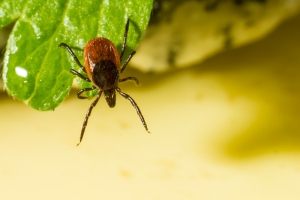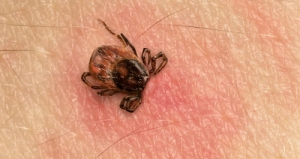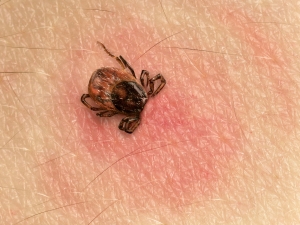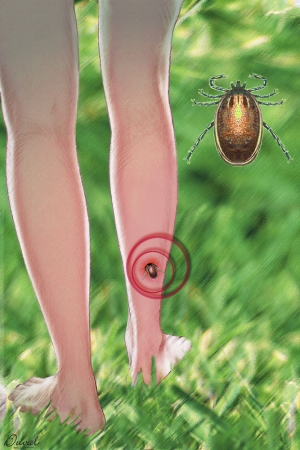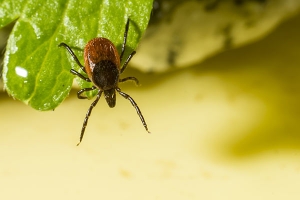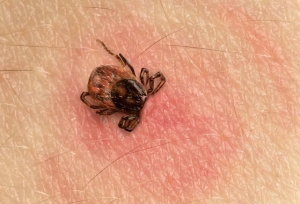Lyme disease, also called Borreliosis, is a tick born bacterial infection and is the most common vector born disease in the United States and Europe. It is caused by the bacterium of the Borrelia species which is carried by the ticks from animals to humans. Due to unspecific flu-like symptoms including headache, fatigue, low grade fever, rash and joint pains, it is hard to diagnose and treat Lyme disease at an early stage. If the bacteria is not eliminated more symptoms develop that can last for months or years and significantly reduce an individual’s quality of life. Various antibiotics are not fully effective especially against latent forms of the bacteria and also add the risk of side effects.
In the last issue of the Health Science News Page, we discussed insect-borne diseases with a specific focus on Lyme disease. Lyme disease was first widely recognized in 1975 in Old Lyme, Connecticut, USA. It is a bacterial infection caused by a type of bacteria called Borrelia. It is transmitted to humans through the bite of a tick that feeds on other small animals, pets, deer, mice, birds, and squirrels carrying the bacteria.
Lyme disease starts with vague flu-like symptoms such as skin rashes, fever, muscle aches, and fatigue. Due to a lack of specific and reliable laboratory tests, the treatment is often delayed and the disease goes on untreated for a long time. In more advanced or chronic Lyme disease stages, people develop chronic arthritis, inflammation of the heart and other organs, neuropathies, sleep disturbances, cognitive impairment and other neurological symptoms including changes in some of the markers of autoimmune diseases. Oral and intravenous antibiotics are usually applied but their efficacy decreases when given in the later stage of infection. Moreover, many of the antibiotics are not effective due to wide-spread bacterial resistance.
As summer approaches and people start outdoor activities, the season also brings an increased exposure to insects and insect-borne diseases. According to the Centers for Disease Control and Prevention, insect-borne diseases in the US increased more than three times in the last decade. Ticks, mosquitoes, and fleas are the most common carriers of these diseases and they especially increase during longer and hotter summer days.
Lyme disease is one of the most common tick-borne diseases accounting for 3 in 5 cases of insect-borne diseases. It is found in more than 80 countries. In the US it is mainly found in the northeast, midwest and along the Pacific coast. Approximately 476,000 new cases of Lyme disease are diagnosed in the US every year, and close to two million people could be suffering from chronic Lyme disease.
With the approaching summer season, we discussed some aspects of vector borne diseases mainly, Lyme disease in the last section of the Health Science News Page. Lyme disease (LD) was first widely recognized in 1975 by Old Lyme in Connecticut, USA, and today it results in approximately 30,000 cases per year in the USA and 65-80,000 cases in Europe. However due to misdiagnoses and underreporting, it is thought that the actual number of Lyme disease cases could be close to 300,000. And recently the Centers for Disease Control and Prevention (CDC) reported that the insect borne diseases have tripled in the last decade.
According to a recent report published by the Centers for Disease Control and Prevention (CDC), insect-borne diseases in the US have tripled over a period from 2004 through 2016. Ticks, mosquitoes, and fleas are the most common carriers of diseases. These types of biting insects are referred to as vectors. Since 2004, nine additional insect-borne diseases were discovered in the USA. With worldwide weather patterns changing, the longer hotter summer seasons are thought to be one of the leading causes of the increase in vector-borne diseases. Warm weather influences the breeding habits as well as the expansion of the territories of mosquitoes, ticks, and fleas. Additionally, increased intercontinental travel and reforestation of suburban areas expose more people to insects and wildlife carrying these vectors.
Lyme disease (LD), also called Borreliosis or Lyme borreliosis, is a bacterial infection transmitted by ticks. Statistics confirm that LD has become the most common vector-borne illness in the USA and Europe, although its occurrence has been documented on all continents except Antarctica.
LD is caused by the bacterium of genus Borrelia that is harbored in ticks. Borrelia can be found frequently in small and large mammals, and birds and reptiles on which many ticks feed and mate making them prone to become infected. The ticks that spread LD can sometimes co-transmit other tick-borne pathogens such as Ehrlichia sp., Babesia sp., and Bartonella sp.
Lyme disease (LD) is the most common vector-borne disease in the USA (approximately 30,000 cases annually) and in Europe (approximately 65,000-80,000 cases annually). However, current statistics reflect only reported cases, and the actual numbers may be even 5-10 times higher due to frequent misdiagnosis of the disease.
Lyme disease manifests itself as an inflammatory disease that can affect many organs in the body. In its early stage (localized) it affects mainly the skin. In later stages (disseminated and chronic) the inflammation spreads to the joints, nervous system and, to a lesser extent, the heart, muscles or other organs.
